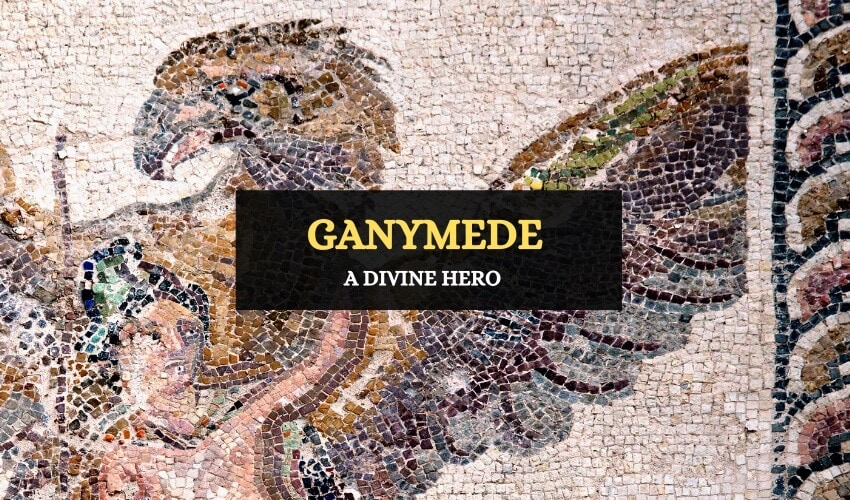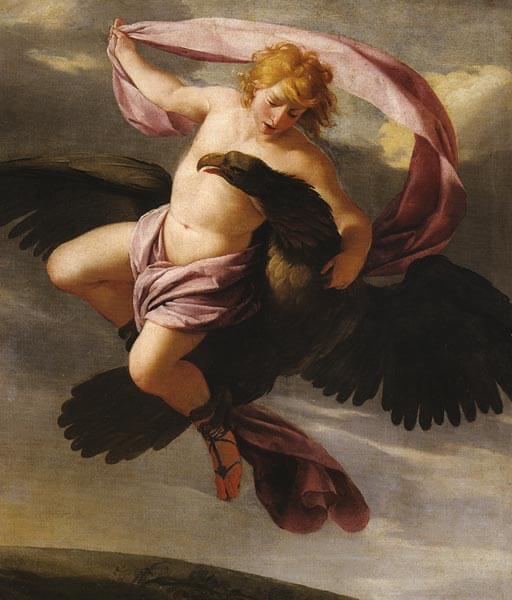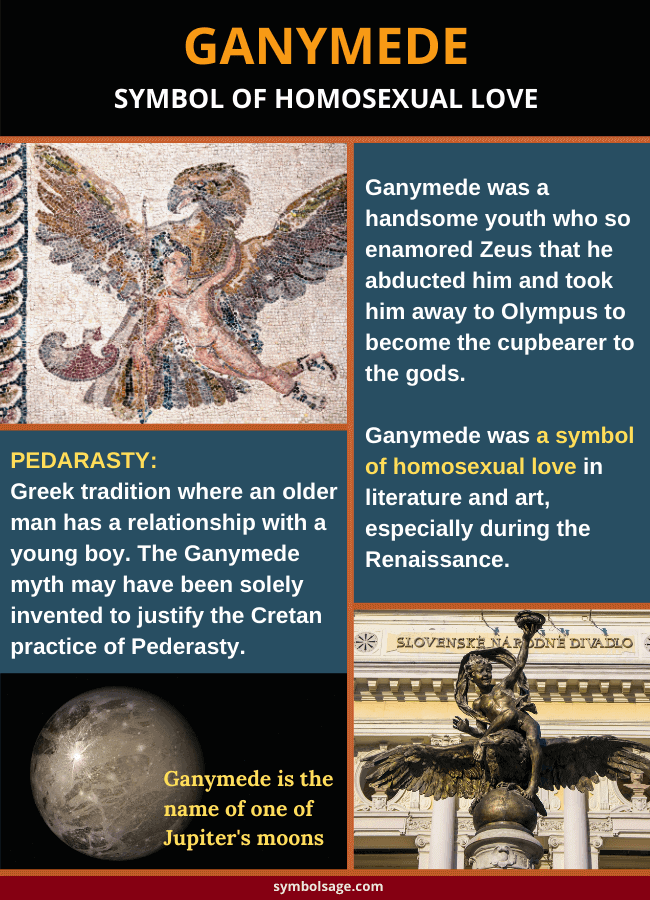
Table of Contents
In Greek mythology, Ganymede was a divine hero and one of the most beautiful mortals who lived in Troy. He was a shepherd who was adored and admired by Zeus, the Greek god of the skies. Ganymede’s good looks gained him the favors of Zeus, and he was uplifted from a Shepherd boy to be an Olympian cupbearer.
Let’s take a closer look at Ganymede and his various roles in Olympus.
Ganymede’s Origins
There’s much speculation regarding the origins of Ganymede, but most narratives say he was the son of Tros. In other accounts, Ganymede was the offspring of either Laomedon, Ilus , Dardanus or Assaracus. Ganymede’s mother could have been either Callirrhoe or Acallaris, and his siblings were Ilus, Assaracus, Cleopatra and Cleomestra.
Ganymede and Zeus
Ganymede first encountered Zeus when he was herding his flock of sheep. The god of the skies glanced upon Ganymede and fell in love with his beauty. Zeus morphed into an eagle and carried Ganymede away to Mount Olympus. To compensate for this abduction, Zeus gifted Ganymede’s father, Tros, a grand herd of horses that were fit to carry even the immortal Greek gods.
After Ganymede was taken to Olympus, Zeus assigned him the duty of a cupbearer, which was a role previously held by his own daughter, Hebe. Ganymede’s father was proud that his son had joined the realm of the gods and didn’t ask him to return.
According to some narratives, Zeus made Ganymede his personal cupbearer, so that he could glance upon his lovely face whenever desired. Ganymede also accompanied Zeus on many of his travels. One Greek writer observes that Ganymede was loved by Zeus for his intelligence, and that his name Ganymede meant pleasure of the mind.
Zeus granted Ganymede eternal youth and immortality, and he was elevated from a position of a shepherd-boy to one of the important members of Olympus. The affection and admiration that Zeus had for Ganymede was often envied and criticized by Hera, the wife of Zeus.
The Punishment of Ganymede
Ganymede eventually became tired of his role as a cupbearer because he could never satiate the thirst of the gods. Out of anger and frustration Ganymede threw away the nectar of the gods (Ambrosia) and refused his position as the cupbearer. Zeus was enraged by his behavior and punished Ganymede by transforming him into the Aquarius constellation. Ganymede was in fact pleased with this situation and loved being a part of the skies and showering rain upon the people.
Ganymede and King Minos
In another version of the myth, Ganymede was abducted by the ruler of Crete, King Minos. Similar to Zeus’ story, King Minos fell in love with Ganymede’s beauty and lured him away to serve as his cupbearer. Greek pottery and vase paintings have depicted the abduction of Ganymede by King Minos. In these artworks, Ganymede’s dogs are a significant feature as they howl and run after their master.
Ganymede and the Greek Tradition of Pederasty
Writers and historians have connected the myth of Ganymede to the Greek tradition of Pederasty, where an older man has a relationship with a young boy. Notable philosophers have even said that the Ganymede myth was solely invented to justify this Cretan culture of Pederasty.
Cultural Representations of Ganymede

Ganymede was a frequent subject in visual and literary arts, especially during the Renaissance. He was a symbol of homosexual love.
- Ganymede has been represented in many Greek sculptures and Roman sarcophagi. An early Greek sculptor, Leochares, designed a model of Ganymede and Zeus in ca. 350 B.C.E. In the 1600’s, Pierre Laviron designed a statue of Ganymede and Zeus for the gardens of Versailles. A more modern sculpture of Ganymede was designed by Paris artist José Álvarez Cubero, and this art piece brought him immediate fame and success.
- The myth of Ganymede has also featured in many classical works of literature such as Shakespeare’s As You Like It , Christopher Marlowe’s Dido, Queene of Carthage, and Jacobean tragedy, Women Beware Women. The poem Ganymed by Goethe was a huge success and was converted into a musical by Franz Schubert in 1817.
- The myth of Ganymede has always been a popular theme for painters. Michelangelo made one of the earliest paintings of Ganymede, and architect Baldassare Peruzzi included the story in a ceiling at Villa Farnesina. Rembrandt reimagined Ganymede as an infant in his painting the Rape of Ganymede.
- In contemporary times, Ganymede has featured in several video games such as Overwatch and Everworld VI: Fear the Fantastic. In Everworld VI, Ganymede’s represented as a beautiful man who has the capacity to lure males and females alike.
- Ganymede is also the name given to one of Jupiter’s moons. It’s a large moon, only a little smaller than Mars, and would have been classified as a planet had it revolved around the sun and not Jupiter.

In Brief
Ganymede’s a testimony to the fact that Greeks not only prioritized gods and goddesses, but heroes and mortals as well. While Zeus often had trysts with mortal women, Ganymede is one of the best known of the male lovers of the gods. The story of Ganymede has played an important role both in the spiritual and socio-cultural practices of the Greeks.








